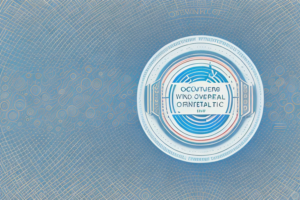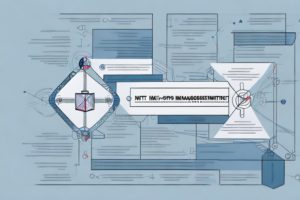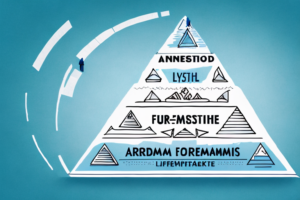What is risk register in RMF?

A risk register
Risk management framework (RMF) is a structured approach that organizations use to identify, assess, and manage risks. It is essential for organizations to manage risks effectively to ensure they can achieve their strategic objectives. One of the crucial components of RMF is the risk register. A risk register is a document that records and manages an organization’s risks. This article will explore the basics of RMF, the importance of risk management in organizational success, and the role and importance of a risk register within the context of RMF.
Understanding the basics of risk management framework (RMF)
Risk management framework is a systematic and structured approach to managing risks. It involves assessing risks, determining their likelihood and consequences, and taking proactive and reactive measures to address them. The key principles of RMF include:
– Identifying risks: This involves identifying potential risks that may impact an organization’s operations, reputation, and strategic objectives.
– Assessing risks: This involves analyzing the likelihood and impact of each risk identified.
– Managing risks: This involves developing and implementing plans to address identified risks.
RMF is widely used in various industries, including healthcare, finance, and government. It provides a framework for organizations to identify and manage risks in a structured and consistent manner. By implementing RMF, organizations can reduce the likelihood and impact of risks, improve decision-making, and enhance overall performance. However, it is important to note that RMF is not a one-time process, but rather an ongoing cycle of risk management that requires continuous monitoring and evaluation.
Importance of risk management in organizational success
Effective risk management is critical to the success of any organization. The benefits of risk management include:
– Protecting the organization’s reputation: Good risk management practices help an organization avoid or mitigate risks that can damage its reputation and negatively impact its stakeholders.
– Improving decision-making: When organizations have a clear understanding of their risks, they can make more informed decisions that minimize the impact of risks on their operations and strategic objectives.
– Enhancing organizational resilience: Effective risk management helps organizations anticipate and respond to potential risks in a timely and effective manner, building resilience and minimizing damage in the event of a risk event.
Another benefit of effective risk management is that it can help organizations identify new opportunities for growth and innovation. By understanding the risks associated with new ventures or projects, organizations can make informed decisions about which opportunities to pursue and how to mitigate potential risks.
Additionally, effective risk management can help organizations comply with legal and regulatory requirements. By identifying and addressing potential risks, organizations can ensure that they are meeting all necessary legal and regulatory standards, avoiding costly fines and penalties.
What is a risk register and why is it important?
A risk register is a document that records and manages an organization’s risks. It is an essential tool used in RMF and plays a crucial role in managing risks effectively. The risk register typically includes information such as:
– The risk description: This describes the risk in detail.
– The risk’s likelihood and impact: This details the likelihood of the risk occurring and its potential impact.
– Risk owner: This identifies the person responsible for managing the risk within the organization.
– Risk response: This outlines the steps the organization will take to mitigate the risk.
The risk register is a vital tool for organizations as it provides a centralized record of risks and their management. By using a risk register, organizations can monitor and manage risks proactively.
Moreover, a risk register helps organizations to prioritize risks based on their potential impact and likelihood of occurrence. This enables organizations to allocate resources and prioritize risk management efforts effectively.
Additionally, a risk register can be used as a communication tool to share information about risks with stakeholders. This helps to ensure that everyone involved in the organization is aware of the risks and the steps being taken to manage them.
Key components of a risk register
There are several key components of a risk register, including:
– Risk description: A detailed description of the risk, including the source of the risk, its potential impact, and its likelihood of occurring.
– Risk classification: A systematic and structured categorization of the risk, such as financial, strategic, or operational.
– Risk owner: The person or group responsible for managing the risk within the organization.
– Risk assessment: A formal assessment of the likelihood and impact of the risk.
– Risk response: The steps the organization will take to mitigate the risk.
– Risk monitoring: Periodic review and updates to the risk register to ensure it remains up-to-date and reflective of current risks.
– Risk communication: The process of sharing information about the identified risks with relevant stakeholders, including employees, customers, and investors. Effective risk communication can help build trust and confidence in the organization’s ability to manage risks.
How to develop a comprehensive risk register for your organization
Developing a comprehensive risk register involves several key steps:
– Identify potential risks: Start by identifying potential risks that may impact your organization’s operations and strategic objectives.
– Evaluate risks: Assess each risk’s likelihood and potential impact and classify them.
– Assign ownership: Assign ownership for each risk to individuals or teams responsible for managing the risk.
– Develop response plans: Develop a plan for each risk that outlines the steps the organization will take to mitigate and manage the risk.
– Monitor and update: Periodically review and update the risk register to stay current with potential risks and their management.
It is important to involve key stakeholders in the risk register development process. This includes individuals from different departments and levels of the organization who have a good understanding of the potential risks and their impact. By involving stakeholders, you can ensure that all potential risks are identified and that the response plans are practical and effective. Additionally, involving stakeholders can help to build buy-in and support for the risk management process.
The role of risk assessment in RMF and its relationship with the risk register
Risk assessment is a critical component of RMF. It involves evaluating the likelihood and potential impact of risks. The risk register is a central repository of information on identified risks and their assessment results. Risk assessment helps organizations prioritize risks and develop plans to manage them effectively.
One of the key benefits of risk assessment is that it enables organizations to identify potential threats and vulnerabilities before they can cause harm. By conducting regular risk assessments, organizations can stay ahead of emerging risks and take proactive measures to mitigate them. This can help prevent costly security breaches and other incidents that can damage an organization’s reputation and bottom line.
Another important aspect of risk assessment is that it helps organizations comply with regulatory requirements. Many industries are subject to strict regulations that require them to identify and manage risks in a systematic and transparent manner. By conducting regular risk assessments and maintaining a comprehensive risk register, organizations can demonstrate to regulators that they are taking appropriate measures to protect their assets and stakeholders.
Common challenges encountered during risk register implementation
Implementing a risk register can be challenging, and some common issues include:
– Resistance to change: Implementation of a risk register can require significant changes in organizational culture and processes, which can cause resistance among some stakeholders.
– Data quality issues: Risk registers rely on accurate and reliable data, but the data can be challenging to obtain, reconcile, and validate.
– Lack of ownership: Without clear ownership and responsibility for managing risks and updating the risk register, it can quickly become outdated and lose effectiveness.
Best practices for maintaining an effective risk register
Organizations can maintain an effective risk register by following these best practices:
– Assign clear ownership and responsibility for the risk register.
– Keep the risk register up-to-date with current risks and their assessment and management.
– Ensure data quality by implementing robust data governance and quality practices.
– Provide regular training and education to stakeholders on the importance and use of the risk register.
How to use a risk register to identify, assess, and mitigate risks
The risk register is a powerful tool for identifying, assessing, and managing risks. Organizations can use the risk register to:
– Identify potential risks and classify them systematically.
– Evaluate the likelihood and potential impact of risks.
– Develop response plans to manage and mitigate risks.
– Monitor and update the risk register to remain current with potential risks and their management.
Tips for communicating risks to stakeholders using the risk register
Effective communication is critical to using the risk register successfully. Stakeholders need to understand the risks identified, their severity, and the organization’s response plans. Some tips for communicating with stakeholders include:
– Use clear and concise language to describe risks and their potential impact.
– Provide stakeholders with regular reports on the status of the risk register.
– Ensure that stakeholders understand their roles and responsibilities in managing risks.
Integrating the risk register into your overall RMF strategy
The risk register is a central component of RMF and should be integrated into the broader strategy. Integrating the risk register involves:
– Ensuring that the risk register aligns with the organization’s overall goals and objectives.
– Regularly reviewing the risk register to ensure it remains effective and relevant.
– Using the risk register’s information to inform decision-making and strategic planning processes.
Conclusion
In conclusion, the risk register is an essential component of RMF. By providing a central repository of risks and their management, it helps organizations stay proactive and manage risks effectively. With careful planning, effective communication, and a commitment to data quality, organizations can develop and maintain an effective risk register that supports their overall RMF strategy.



